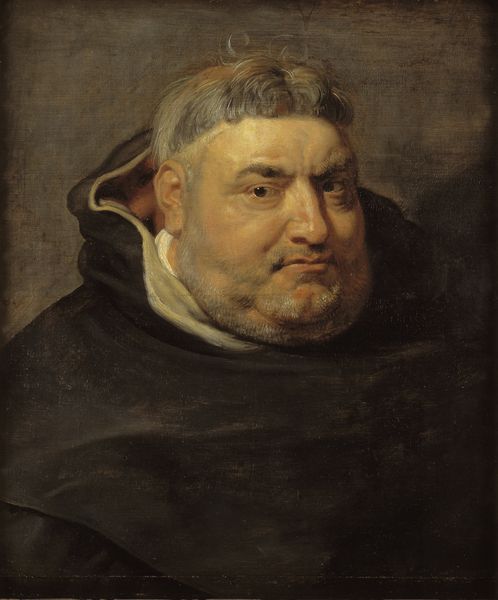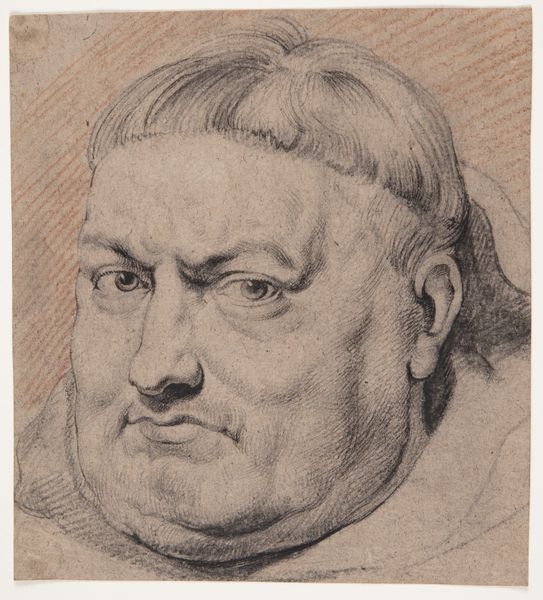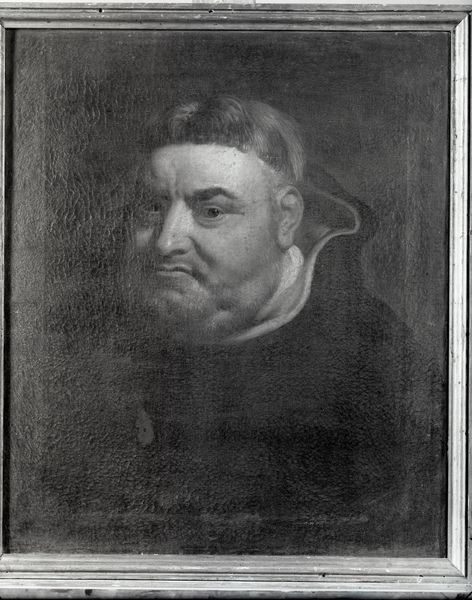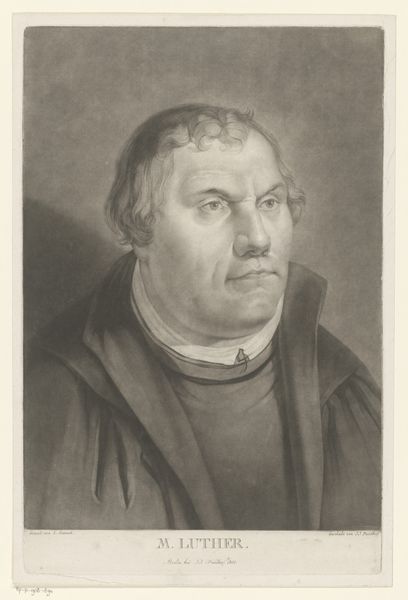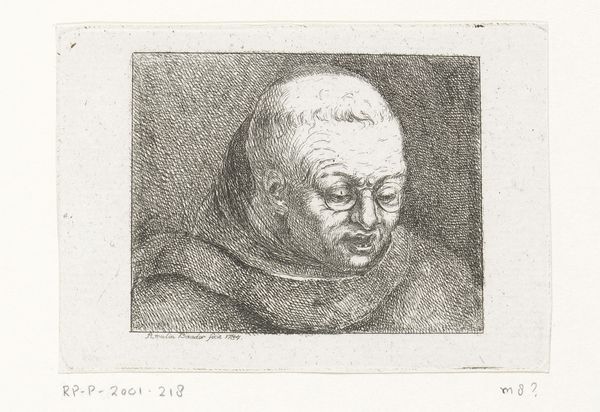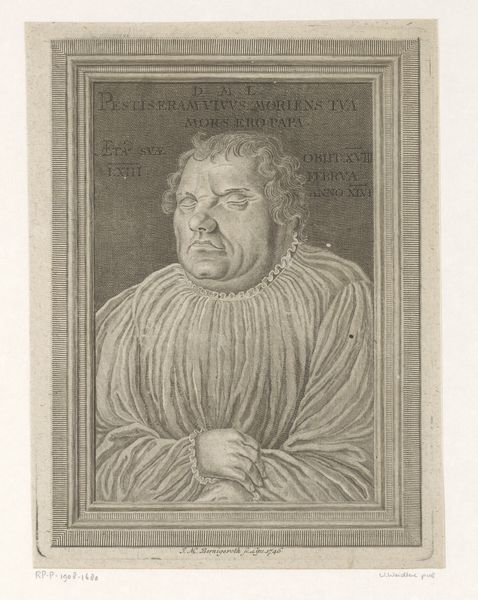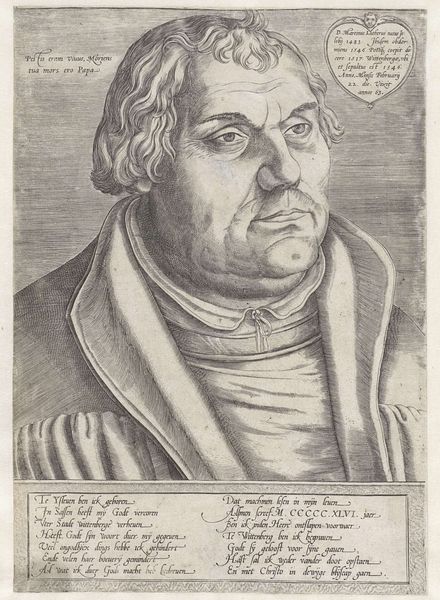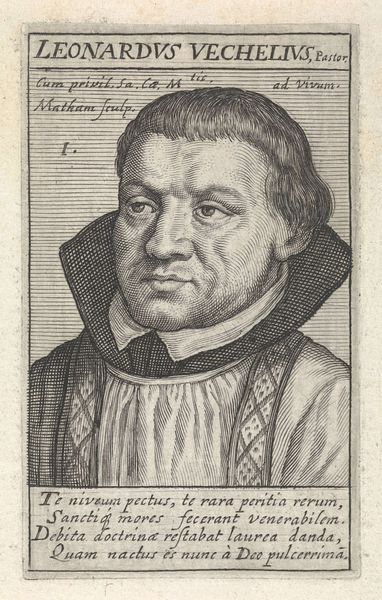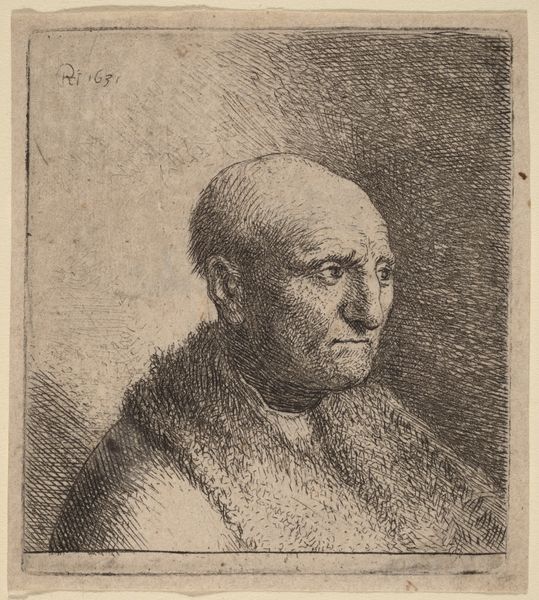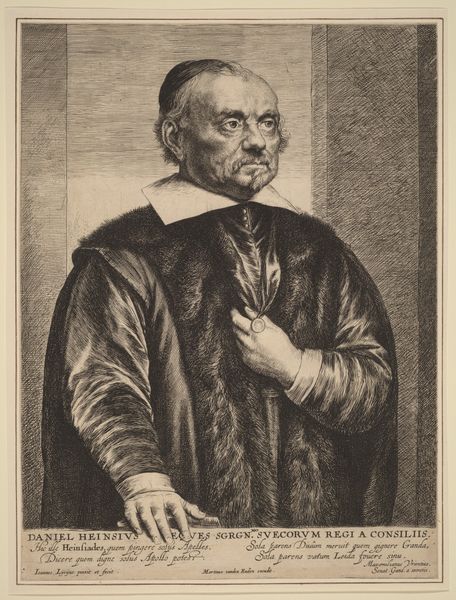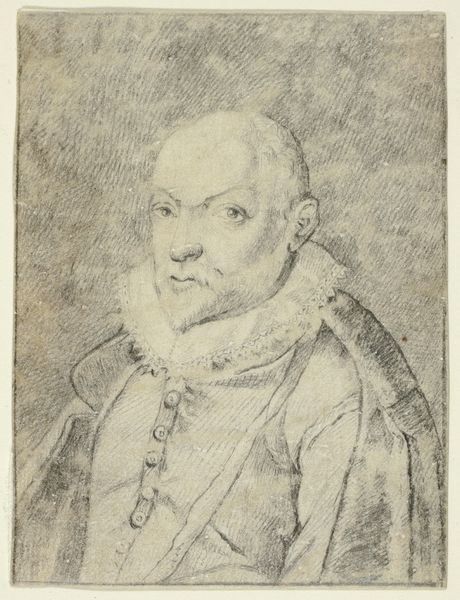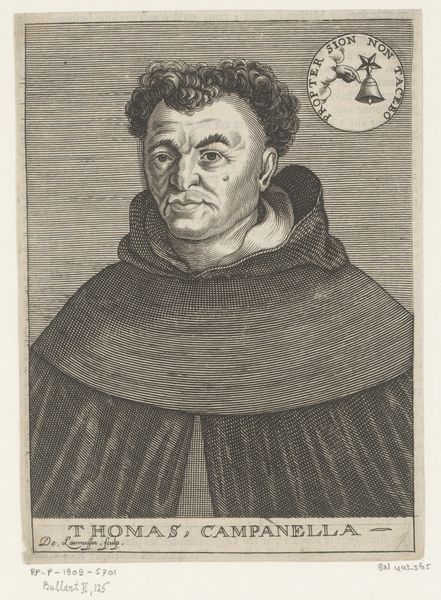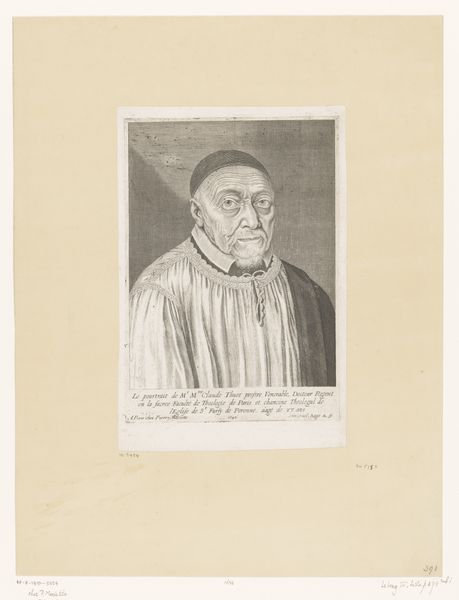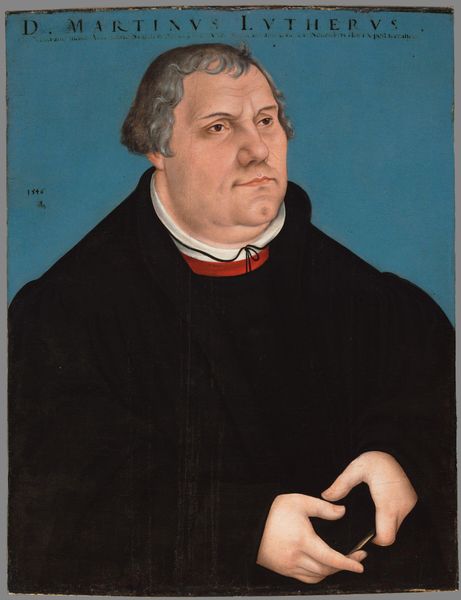
print, etching
#
portrait
#
medieval
# print
#
etching
#
line
#
portrait drawing
#
realism
Dimensions: 160 mm (height) x 108 mm (width) (plademaal), 132 mm (height) x 100 mm (width) (billedmaal)
Curator: Here we have Peter Ilsted’s "A Monk," an etching from 1882, held here at the SMK. What are your initial impressions? Editor: Brooding. There's a density to it, not just the dark lines, but the feeling it evokes. Almost a somber intensity radiating from the subject. Curator: The portrait evokes, perhaps intentionally, medieval representations of holy figures. Remember, historical paintings of monks were often used as emblems of devotion and religious virtue. I find this evokes those depictions. Editor: Absolutely. It's interesting how the artist utilizes very fine lines to create texture. It feels almost photographic in its realism, capturing every fold of the robe and every contour of the face, even his subtle expression. To me the darkness speaks more about the artist's interpretation of monastic life than actual realism. Curator: Right, while the use of etching gives a textured impression that reflects detail and perhaps realism, there's an element of theatricality too. Ilsted created images with the goal of exhibition, which influences artistic style. Think about the context of the 1880s in Denmark—a time of growing secularization, urbanization. Depicting a monk might have been a statement or commentary. Editor: Certainly. Looking closer, you start to see this depiction through multiple lenses. Monks, for many cultures, have historically been these interesting figures representing discipline but also sometimes insularity from the larger population. How might viewers in Ilsted's time or even our own interpret these symbols? Curator: It highlights the enduring human interest in these monastic traditions—as an ongoing negotiation of tradition versus modernity. Even how museums represent history involves politics. Editor: Ultimately, a compelling dialogue is started when seeing "A Monk", between aesthetic representation and sociohistorical understandings of faith, introspection and community, that linger with the viewer long after seeing the artwork. Curator: Indeed. It’s in those questions, those tensions, where the art truly speaks.
Comments
No comments
Be the first to comment and join the conversation on the ultimate creative platform.
